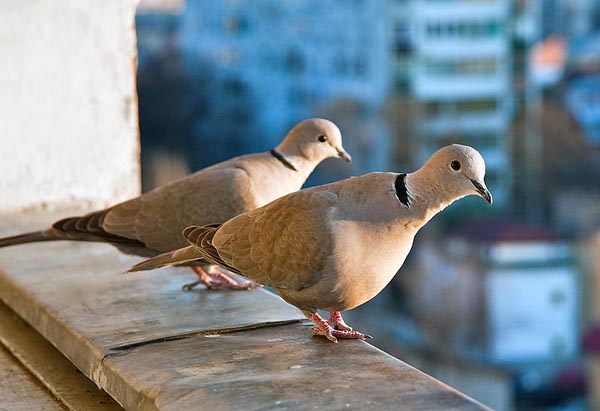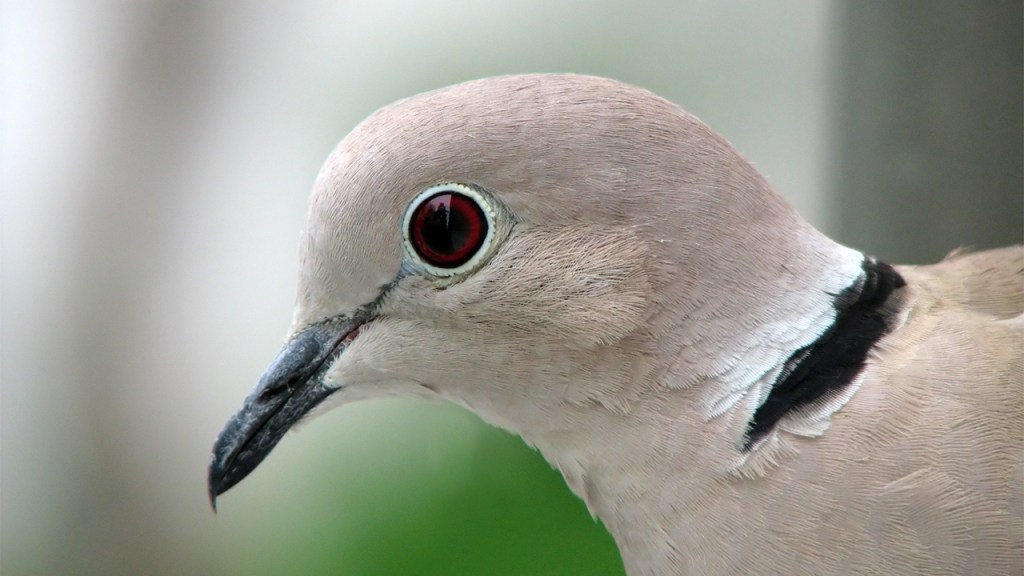The Great Backyard Bird Count (GBBC) — one of the largest citizen science initiatives in the world – annually documents a wide variety of bird population trends.
To my mind, one of the most interesting has been the dramatic spread of the non-native Eurasian collared dove across North America.
The GBBC asks citizen birders to watch an area for at least twenty minutes sometime during a four-day period in mid-February (this year’s count concluded yesterday), and record the birds they see.
Just ten years ago, seeing a Eurasian collared dove would have been a novelty. No more: the doves are now commonly reported by birders in most of the United States.
GBBC data tell the story of this rapid spread.
In the 1970s, the Eurasian collared dove was introduced to the Bahamas. By the early 1980s, the non-native birds made their way to South Florida, where they established populations. Then they began spreading north and west.
Their range appears to have expanded slowly at first. A look at GBBC reports from 1998 show a lot of sightings in Florida, with some birds reported in Texas, Alabama and Arkansas.
By 2001, the doves reached California.
Last year’s bird count results showed the Eurasian collared dove had colonized much of the country. It has not (yet) been reported in New England, but it has reached as far north as Alaska.
The GBBC’s video map dramatically illustrates this expansion.
In my state of Idaho, the doves were first recorded in 2005 by two backyard birders. In subsequent years, the bird was commonly reported in Idaho’s eastern corners. Last year, 132 GBBC participants reported 719 doves throughout the state.
I saw my first Eurasian collared dove in our backyard in 2008 – a banded bird that may have been an escaped pet. Last year, I began seeing the doves hanging around our neighborhood. This year was the first that I noted the species during my own participation in the Great Backyard Bird Count.
What’s going on here? Should conservationists be concerned about this spread?
Unlike some dove species, Eurasian collared doves aren’t migratory. However, they do readily expand into new suitable habitat. In fact, in their native Asia, Eurasian collared doves have been rapidly expanding their range as well – colonizing new countries every year.
The dove is one of those species that adapts well to humanity. The trees, power lines and bird feeders of suburbia provide perfect habitat. The Eurasian collared dove is almost always seen near homes and farms, not unbroken forest or prairie.
Research indicates it is not adversely affecting native mourning doves or other birds. It may simply be filling a new habitat niche created by suburban habitat. But it is still early in the spread.
Could Eurasian collared doves become an invasive threat? That remains to be seen.
Citizen science projects like the GBBC and another citizen initiative, Project FeederWatch, will help scientists continue to track the spread and impacts of the species. It will be interesting to learn what this year’s count found about Eurasian collared doves. If past years are any indication, their populations will likely have grown and spread into new areas of the country.
Have you seen Eurasian collared doves in your area? Have you noted other trends during your backyard bird counts? Let us know what you’re seeing!





I have noticed, for the first time, these Doves on one of my feeders……..Mourning Doves are usually the predominate species here.
We live on an acreage in SE Saskatchewan, CAnada. We had never seen this dove in the 21 yrs we have been here. They 1st arrived, about 10-12, 3-4 weeks ago. There are now approx. 25-30 of them. We do normally have mourning doves.
I put out a bird feeder in my yard I get scrub jays morning doves and now have many 25+ eurasian collared doves they seem to prefer black sun flower seeds while the morning doves like millit seeds, they make a helocopter like decent to the bird bath feeder I have seen as many as 10 crowded on to a 18 inch surface.
Like the European Collared Dove, I, too, am a non-native resident of Eureka, CA. I bought a mobile home at Spruce Point just south of Eureka in the spring of 2000. The following spring, I noticed what I at first thought were a pair of mourning doves perched on a utility wire just behind the Humboldt Bay Mobile Home Park office. It turned out they weren’t Mourning Doves, but our intrepid, European Collared Doves. This past spring, they have expanded in number, such that I heard their cooing every morning and evening and even all day as well as sighting them perching in trees and utility wires, foraging on the ground as well as in flight.
My sister has had 2 collared doves in her Helena, AL backyard all summer (2015). She does not recall seeing them last year.
I am in Edmonton Alberta there is one at my birth bath today. first time I have seen one in this area. did have a ringneck ( I think) more of a tan colour a few years ago for a day.
This one is pale grey and has the distinctive black markings at the base of the tail.
Thanks for your interest Matt and this site
I live in Whitehorse, Yukon, and we had the Doves frequently over the summer months. However, in the middle of September we have been seeing less of them
I have a pair of eurasian doves in back yard hanging out with a pair of mourning doves. Parlier, Ca. Fb fb
We first noticed one in our yard last summer eating with the mourning doves. This year we have seen three at one time and a juvenile. They still eat with the mourning doves but do chase the smaller birds. They are nesting nearby in our neighbors pine tree. We are in Escondido, CA.
We hunted dove last year at the souther tip of Nevada and our party shot 56 doves only 8 were not Eurasian. I think they far outnumber the Mourning or White wing doves. Only advantage is they are a little bigger.
I am listening to one right now across the street from my house in south Burnaby, BC, Canada (Vancouver). Also seen in a tree a mile away at a riverside park.
We have three of these that frequent our many feeders. We live in Yelm, Washington. Sometimes they come together, alone or in a pair.
Late June-my cousin showed me a pic of one which I thought was a morning dove but corrected by a friend. My cousin had never seen a bird like it and so have I. Never been reported until now. Tununak, Ak, about 120 miles west of Bethel Ak, on the Bering Sea coast.Yukon/Kuskokwim Delta-Alaska
Fifty collards waiting by my feeder this morning, yes, that is 50. They do seem to limit access by the smaller birds but are also more timid so when I frighten them off the smaller birds get a chance. An occasional mourning or two in the mix. They also seem to have attracted a Peragrin which I see of and on in a tall dead tree next door.
Lindon, Utah. July 16, 2015.